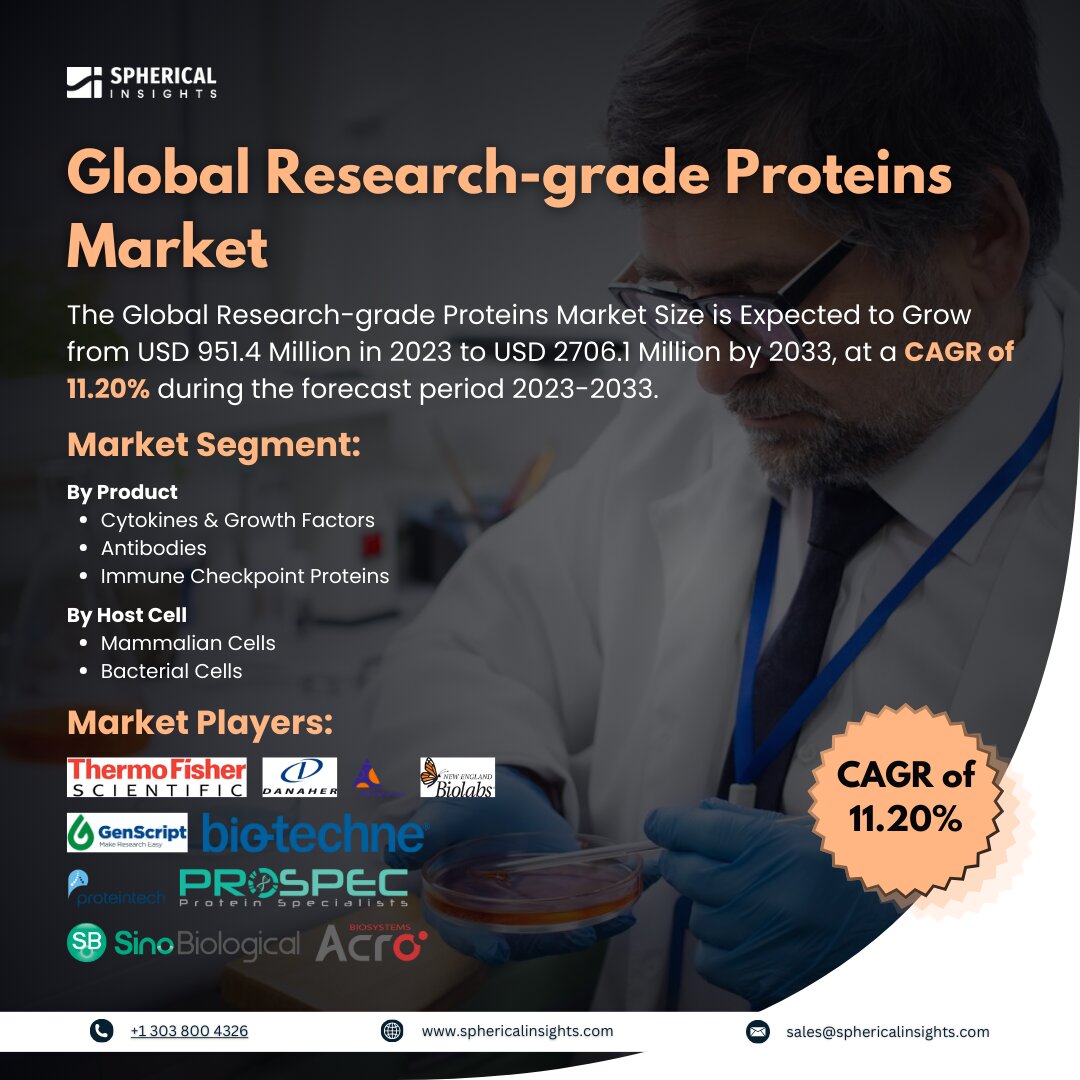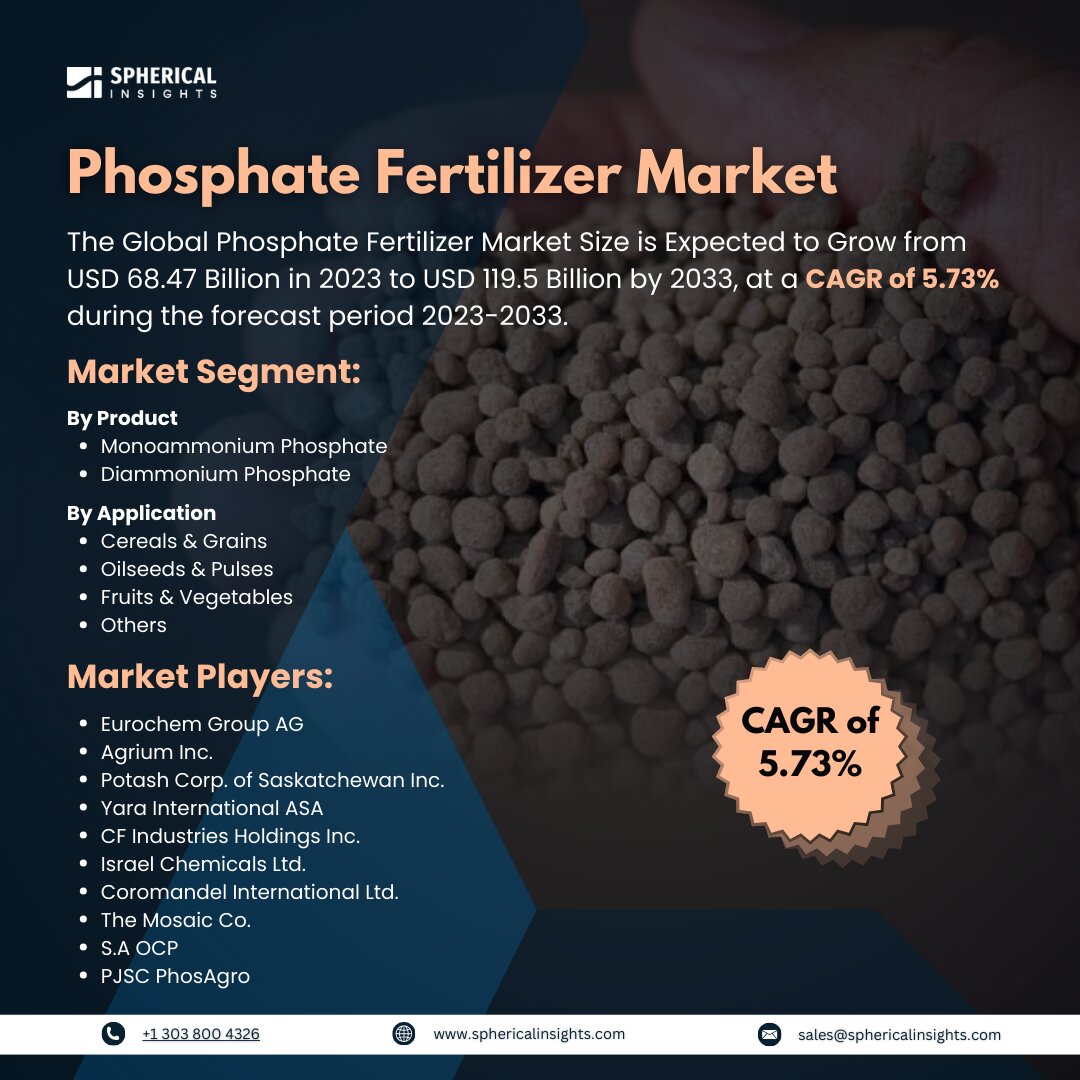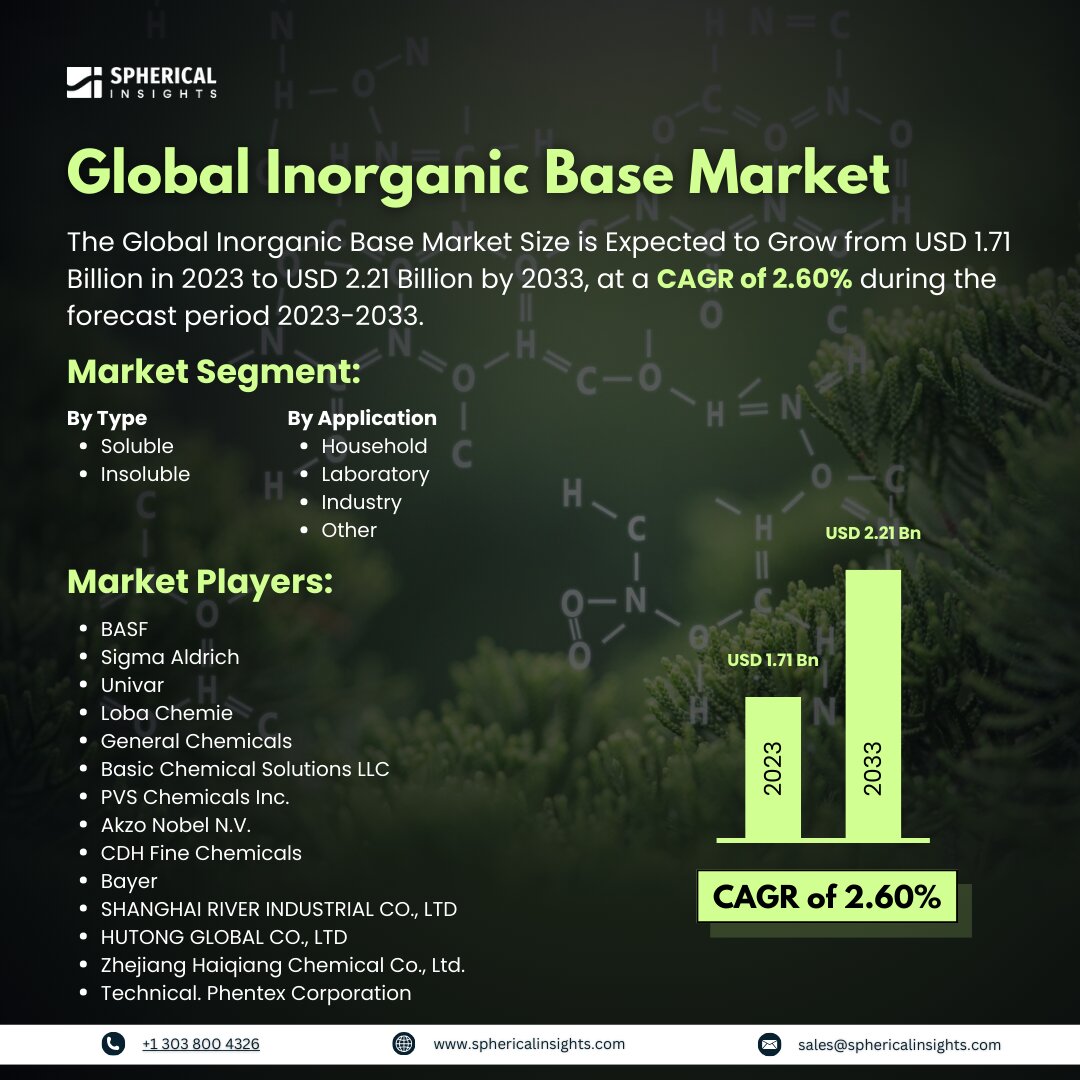Global Research-grade Proteins Market Size To Exceed USD 2706.1 Million By 2033
According to a research report published by Spherical Insights & Consulting, the Global Research-grade Proteins Market Size is Expected to Grow from USD 951.4 Million in 2023 to USD 2706.1 Million by 2033, at a CAGR of 11.20% during the forecast period 2023-2033.
Browse 210 market data Tables and 45 Figures spread through 190 Pages and in-depth TOC on the Global Research-grade Proteins Market Size, Share, and COVID-19 Impact Analysis, By Product (Cytokines & Growth Factors, Antibodies, Immune Checkpoint Proteins), By Host Cell (Mammalian Cells, Bacterial Cells), and By Region (North America, Europe, Asia-Pacific, Latin America, Middle East, and Africa), Analysis and Forecast 2023 – 2033
The research-grade proteins market refers to the production and supply of proteins mainly used in scientific research, diagnostics, and drug development. These proteins are usually produced in highly controlled environments to ensure their purity, quality, and functionality for use in academic, clinical, and pharmaceutical research. Common types of research-grade proteins include enzymes, antibodies, and recombinant proteins. Moreover, expanding industries in biotechnology and pharmaceuticals drive the research-grade proteins market, as these require high-quality proteins in drug discovery and testing. The expansion of genomics, proteomics, molecular biology, and increasing healthcare needs in emerging markets also provide a tailwind. Improved technologies for protein production- the recombinant DNA technology offers the efficiency of making better proteins. There is also the very rising use of personalized medicine and the application of specific proteins in the diagnostics and treatment of diseases. However, the production of research-grade proteins is hindered by high production costs, complex manufacturing processes, and regulatory hurdles. In addition, issues regarding protein purity, stability, and reproducibility can limit the availability and effectiveness of these proteins in research and therapeutic applications.
The antibodies segment accounted for the highest share in 2023 and is anticipated to grow at a remarkable CAGR during the projected timeframe.
Based on the product, the global research-grade proteins market is divided into cytokines & growth factors, antibodies, and immune checkpoint proteins. Among these, the antibodies segment accounted for the highest share in 2023 and is anticipated to grow at a remarkable CAGR during the projected timeframe. This is because of their critical role in various applications, including diagnostics, therapeutics, and disease research. The rising interest in immunotherapy and personalized medicine also increases the demand for antibodies.
The mammalian cells segment dominated the market in 2023 and is projected to grow at a substantial CAGR during the projected timeframe.
Based on the host cell, the global research-grade proteins market is divided into mammalian cells and bacterial cells. Among these, the mammalian cells segment dominated the market in 2023 and is projected to grow at a substantial CAGR during the projected timeframe. This is because they are able to produce more complex, human-like proteins, which is important for therapeutic applications and drug development. The need for biologics and personalized medicine also drives the use of mammalian cells.
North America is anticipated to hold the largest share of the global research-grade proteins market over the predicted timeframe.
North America is anticipated to hold the largest share of the global Research-grade protein market over the predicted timeframe. This is driven by the robust biotechnology and pharmaceutical industries, significant investment in R&D, and advanced healthcare infrastructure in the region. The U.S. is a global leader in drug discovery, personalized medicine, and immunotherapy, creating demand for research-grade proteins used in clinical and preclinical research.
Asia Pacific is expected to grow at a rapid CAGR of the global research-grade proteins market during the forecast period. This growth is spurred by expanding healthcare infrastructure, increasing investments in biotechnology and pharmaceuticals, and rising demand for advanced research-grade proteins in drug development, diagnostics, and personalized medicine across countries like China and India.
Competitive Analysis
Major vendors in the global research-grade proteins market are Thermo Fisher Scientific, Inc., Danaher (Abcam Plc), Miltenyi Biotec, GenScript, Bio-Techne, Proteintech Group, Inc., ACROBiosystems, Sino Biological, Inc., ProSpec-Tany TechnoGene Ltd., New England Biolabs, and Other.
Market Players
- Investors
- End-users
- Government Authorities
- Consulting and Research Firm
- Venture capitalists
- Value-Added Resellers (VARs)
Market Segment
This study forecasts revenue at global, regional, and country levels from 2020 to 2033. Spherical Insights has segmented the global research-grade proteins market based on the below-mentioned segments:
Global Research-grade Proteins Market, By Product
- Cytokines & Growth Factors
- Antibodies
- Immune Checkpoint Proteins
Global Research-grade Proteins Market, By Host Cell
- Mammalian Cells
- Bacterial Cells
Global Research-grade Proteins Market, By Regional
- North America
- Europe
- Germany
- UK
- France
- Italy
- Spain
- Russia
- Rest of Europe
- Asia Pacific
- China
- Japan
- India
- South Korea
- Australia
- Rest of Asia Pacific
- South America
- Brazil
- Argentina
- Rest of South America
- Middle East & Africa
- UAE
- Saudi Arabia
- Qatar
- South Africa
- Rest of the Middle East & Africa



